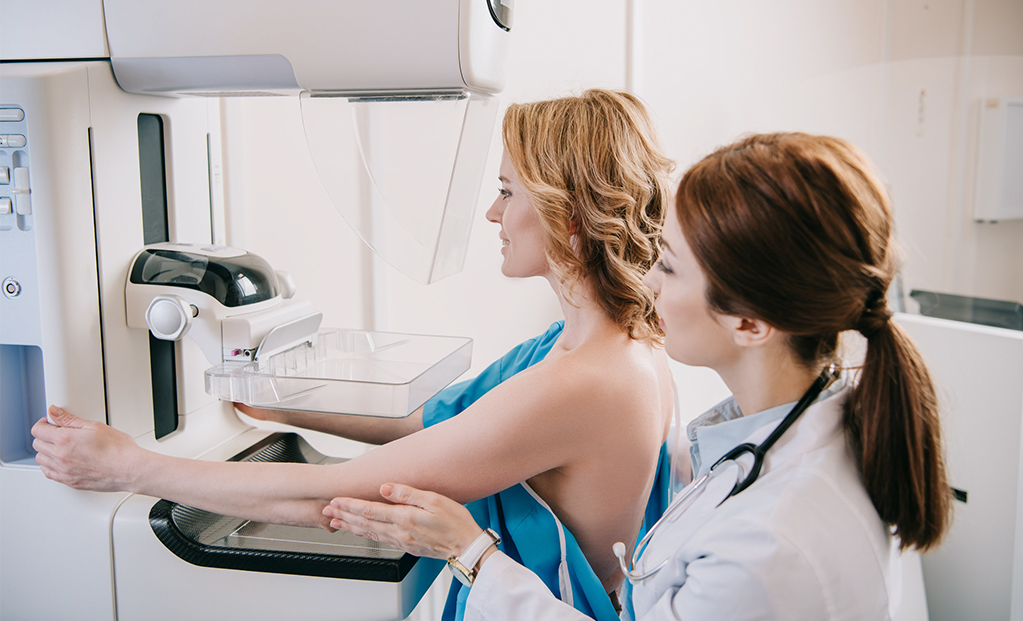
INSURANCE NERDS
BLOG
Breast Cancer Awareness & Prevention Tips
Think pink! This October, support the fight against breast cancer by learning about it and getting yourself checked out.
Early detection can save your life and that of others. Breast cancer affects all genders and is the most common cancer among American womenx, aside from skin cancer. 1 in 8 womenx will be diagnosed with breast cancer in their lifetime; that’s an alarming number of 1 person every 12 minutes just in the U.S. Knowing your family history and getting screened is half the battle. Together we can help researchers and patients understand breast cancer and how we can stop it in its tracks.
What is breast cancer?
Breast cancer is a type of cancer that happens when the cells in the breast area grow at an abnormal speed. Sometimes tumors can grow very slowly, and by the time you start feeling a lump, over 10 years could have passed! On the other hand, some tumors are very aggressive and grow faster. Around 50-75% of breast cancers start in the milk ducts, and 5-15% begin in the lobules and breast tissues. Even though breast cancer is usually associated with womenx, other genders can get it too! There are different kinds of breast cancers, such as Ductal carcinoma and Invasive breast cancer.
The CDC says that while most women are at risk, most do not get breast cancer. If you have breast cancer risk factors, talk with your doctor about ways you can lower your risk and about getting screened.
Risk factors may include:
- Being a womanx who is 50yrs or older
- Genetic changes in BRCA1 or BRCA2
- Reproductive history
- Family history with ovarian and breast cancer
- Radiation therapy
- Lack of physical activity
- Weight issues after menopause
- Drinking alcohol
Warning Signs of Breast Cancer
According to the U.S. Centers for Disease and Control, different people have different breast cancer symptoms, and some people do not have any signs or symptoms.
The Top 8 Warning Signs of Breast Cancer are:
- New lump in the breast or underarm (armpit).
- Thickening or swelling of part of the breast.
- Irritation or dimpling of breast skin.
- Redness or flaky skin in the nipple area or the breast.
- Pulling in of the nipple or pain in the nipple area.
- Nipple discharge other than breast milk, including blood.
- Any change in the size or shape of the breast.
- Pain in any area of the breast.
It is important to keep in mind that these symptoms can occur with other conditions that are not cancer. Thus, screenings are essential and can save your life.
Lower Your Risk of Breast Cancer
You can’t change some factors, such as getting older or your family history, but you can help lower your risk of breast cancer by taking care of your health in the following ways:
- Keep a healthy weight.
- Exercise regularly.
- Don’t drink alcohol, or limit alcoholic drinks to no more than one per day.
- Breastfeed your children, if possible.
Also, if you are taking or have been told to take hormone replacement therapy or birth control pills, ask your doctor about the risks and find out if it is right for you. If you have a family history of BC or inherited changes in your genes, talk to your doctor about other ways to lower your risk.
Checking for breast cancer
Knowing how to check for breast cancer is the most important way to prevent it and catch it right on its tracks. National Breast Cancer Foundation, INC compiled a wonderful guide on checking and being aware; just click here! Here is a great way to have a breast health plan and prepare for your appointment.
- Ask your doctor in your yearly physicals
- Limit hormone therapy postmenopausal
- Preventive surgery
Get to Know Your Breasts & Get a Mammogram if You’re at High Risk
Being familiar with how your breasts look and feel can help you notice symptoms such as lumps, pain, or changes in size that may be of concern. In the case that a woman finds a lump in her breast, it is highly recommended that she receives a mammogram to determine whether or not the cells are benign or malignant.
Mammograms are an X-ray of the breast and the best way to find breast cancer early when it is easier to treat, and before it is big enough to feel or cause symptoms. Having regular mammograms can lower the risk of dying from breast cancer.
The USPSTF recommends that women between the ages of 50 to 74 years old who are at average risk for breast cancer get a mammogram every two years. If you’re a woman 40-49 years old, start talking to your doctor or health care provider about when to start and how often to get a mammogram. Women should weigh the benefits and risks of screening tests when deciding whether to begin getting mammograms before age 50.
Find a mammogram facility near you and learn more about breast cancer risk factors, symptoms, and find valuable resources here.
—
Source: U.S. Centers for Disease and Control

